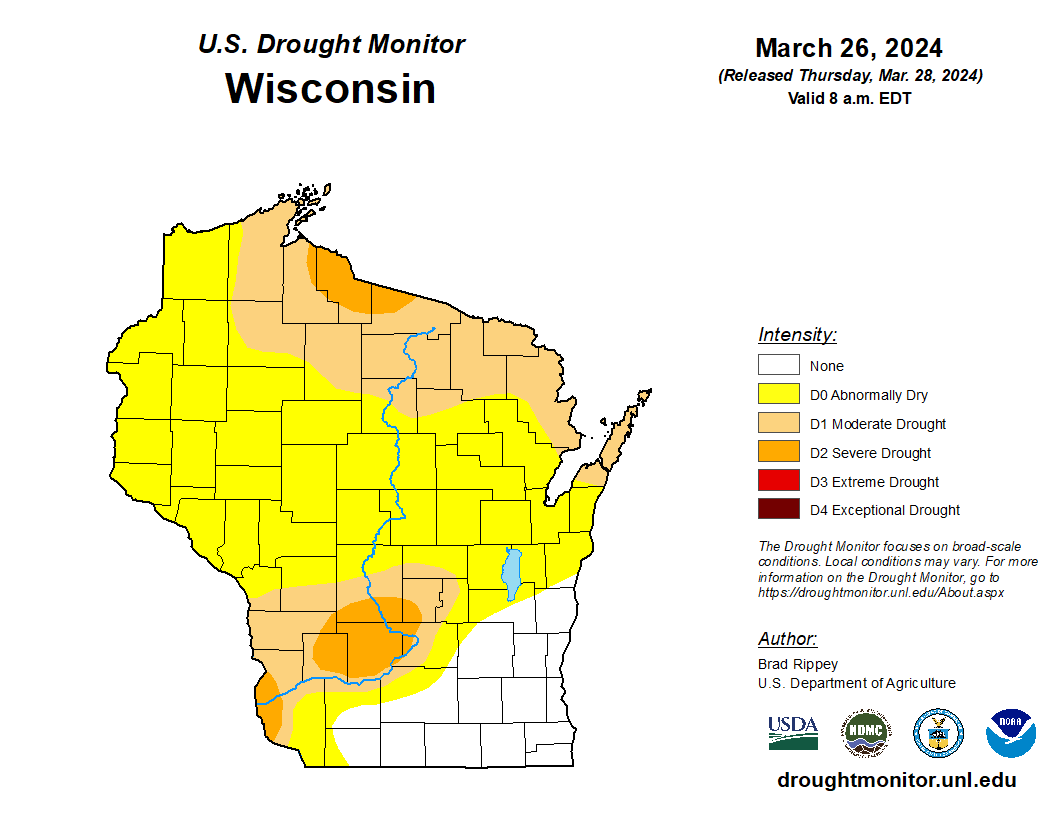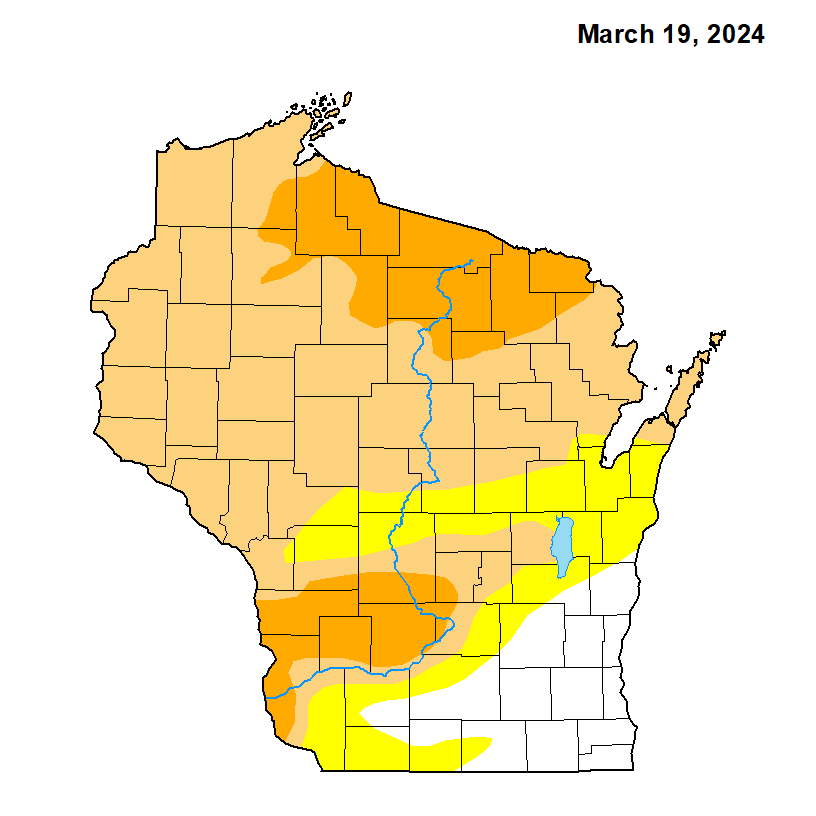Rain and snow in Wisconsin offer some relief for state's drought

In the last week, heavy snow and rain throughout Wisconsin have provided relief to drought conditions, providing a needed boost after a relatively dry winter.
The relief comes after parts of northern Wisconsin received over a foot of snow on Sunday and the southeastern and central parts of the state received consistent rainfall. It has dropped the level of drought in about 13% of the state, according to data from the U.S. Drought Monitor, a weekly analysis of drought conditions in the country.
The latest monitor was released Thursday and showed improvements throughout the state. On March 19, 88.17% of the state was in some level of drought and that dropped by about 2% by Thursday. More significantly, it showed that the intensity of the state's drought has eased.
For example, a week ago just over 19% of the state was in a level between a D2 to D4 drought and that has dwindled to just 6%. Meteorologists who compile the drought monitor rank droughts on a scale of D0 or abnormally dry to D4, which is described as an exceptional drought.
This year's drought contrasts with March 2023, when drought monitor data showed that no part of the state was in a drought.
"(The recent rains) have done wonders for the Wisconsin drought, which is an artifact of summer and has been exacerbated by the almost snow-free winter," said Brad Rippey, an agricultural meteorologist in the U.S. Department of Agriculture and one of ten rotating authors of the U.S. Drought Monitor map.

Last summer, Rippey said, some of the state reached a D4 level for the first time in the monitor's 25-year history. A D4 rating is classified as a once-in-50-year to a once-in-100-year drought.
That persisted through the winter, as the weather phenomenon El Nino led to an especially dry winter in the state and helped these conditions persist. It has left the state's moisture levels playing catch up as it nears growing season, when demands on the state's water system intensify as farmers begin growing crops.
Most years, the summer's heat, growing demands and other negative factors are stymied in the other seasons, as precipitation brings relief.
These impacts can be high. For example, the USDA has estimated that droughts reduced crop yields by 11% or more in 2012 and, more recently, the state has entered its wildfire season at a much quicker and sprawling pace this year.
"Generally, (when) you think of fall, winter, spring, you think of your recovery time. That didn’t necessarily happen this year due to the lack of snow," Rippey said.
However, recent precipitation has been a boon — and far outpaced typical averages for this time of year, according to data from the local National Weather Service.
For instance, Milwaukee typically gets 1.83 inches of precipitation by this time of year, but this March is at almost five inches, said Kevin Lynott, a meteorologist at the local NWS. In central Wisconsin, that's similar as Madison has received 3.16 inches, up from 1.87 inches typically.
There's more rain in the forecast as well, with very light precipitation forecasted for Friday night and a more significant system forecasted for late Monday. The latter could bring between half an inch to an inch of rain, Lynott said.
Rain chances return for the end of the week. The first arrives late Friday PM and pushes out following the lunch hour on Saturday. An isolated rumble of thunder is possible along the state line. Following a break, the next round of rain arrives Sunday afternoon. #wiwxpic.twitter.com/0yUAIftmGB
— NWS Milwaukee (@NWSMilwaukee) March 28, 2024
While recent snows in northern Wisconsin have helped, he said, it hasn't made up for this winter's lack of precipitation entirely. That's reflected in the drought monitor that shows the northern third of the state with most of the moderate to severe drought ratings.
Information from the federal National Integrated Drought Information System shows that drought is forecasted to persist for a northern portion of the state through the end of June.
"The good news is that most of southern Wisconsin has no drought intensity," Lynott said. "That means, we have the moisture at the surface and the ground. The water supply is good and, like I said, Mother Nature has been helping us here."
Rippey said that much of Wisconsin's drought conditions have also shifted from a long-term drought to just a short-term drought in the latest monitor. It was another sign that the state's recent precipitation was paying off.
What that means for conditions on the ground is that the recent rains and snow have moistened topsoil and removed short-term drought conditions, he said. What persists are factors involving long-term drought, like shortages in groundwater and low stream and lake levels.
"So, drought is not completely gone, even though it looks like it by looking at the landscape," he said.
This article originally appeared on Milwaukee Journal Sentinel: Wisconsin's drought conditions improved as the last week brought snow, rain
